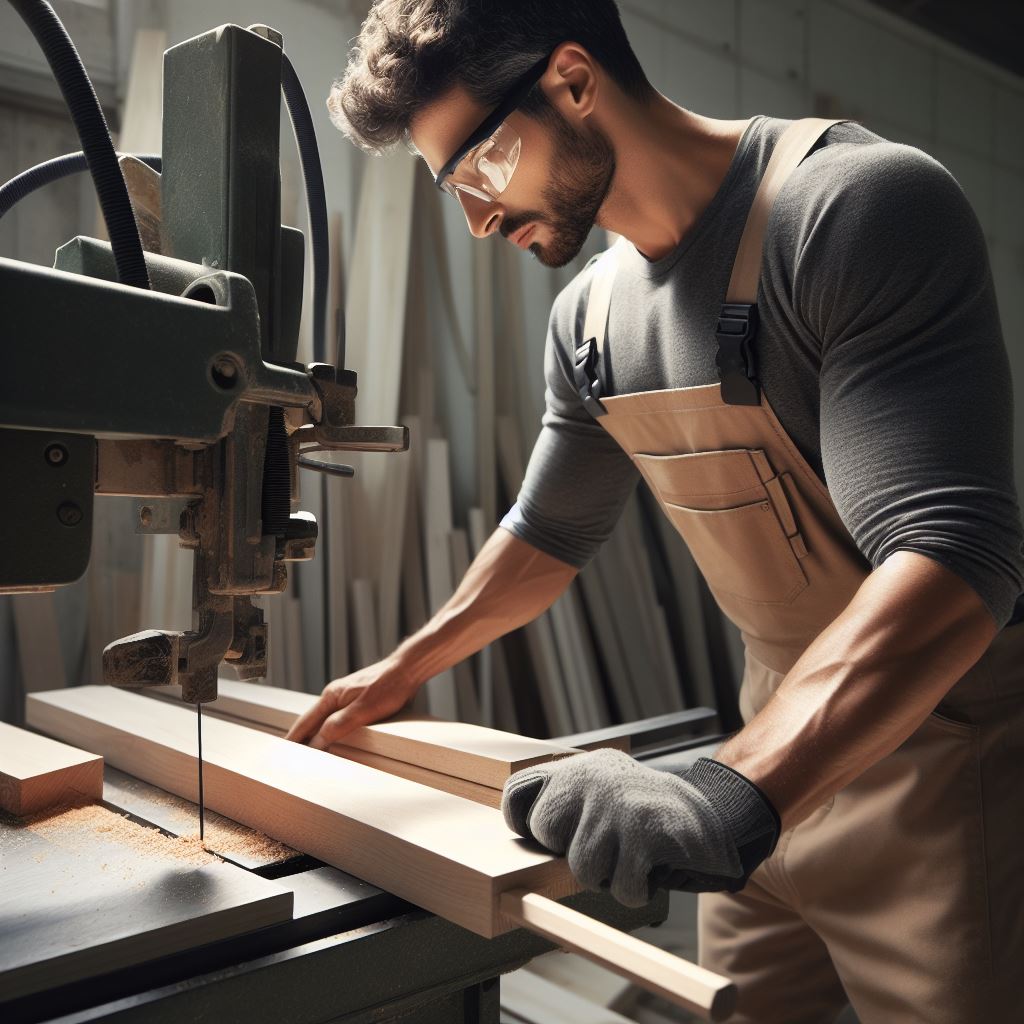
Introduction
Power tools rapidly spin sharp blades that can inflict serious injury. Follow essential precautions around workshop machines to avoid trips to the emergency room.
Key Takeaways
- Install safety guards preventing contact with moving parts
- Adhere to proper operating procedures for each tool
- Focus fully on the machine during demanding operations
Shielding Danger Zones
Rotating cutters pose amputation and entanglement risks. Effective guarding creates a protective barrier, preventing bodily contact.
Guard Types
Choose the appropriate shielding method for equipment:
- Self-adjusting splitter and anti-kickback pawls on table saws
- Transparent plastic safety guards covering blade paths
- Electronic braking cartridge systems
- Retracting router bit enclosures
- Automatic shutoff switches if opened during operation
Additional Barriers
Further protect hands from harm by using gripper push sticks, push blocks, featherboards, holders, jigs and other mistake-proofing attachments.
Guard against false confidence around deadly equipment.
Strict Operating Procedures
Closely follow manufacturer instructions for safe machine use.
Key Steps
Incorporate essential workflow habits like:
- Triple checking blank dimensions and quality
- Adjusting fencing to exact widths
- Setting depth for partial cuts
- Using assisting push tools for all through cuts
- Employing jigs for angled operations
Awareness
Fully focus on tool operations, never glancing away. Stay alert to quickly shut down at the first sign of trouble.
Systemize your approach around machines for success.
Proactive Inspection and Maintenance
Well-running equipment with sharp blades behaves predictably. Prevent problems through regular upkeep.
Routines
Stick to maintenance schedules including:
- Checking belt tension and pulley grime buildup
- Lubricating guides and cleaning motors
- Inspecting cords, switches, plugs for defects
- Replacing dull cutters
- Verifying calibrated fence accuracy
Documentation
Log all safety checks and repairs for records. Consider monthly, quarterly and annual servicing timelines.
Stay ahead of issues increasing injury risks.
7 FAQs about Woodworking Machine Safety
1. Should machinery guards be removable?
Only removable barriers allowing blade changes or maintenance should require tools to detach so they aren’t conveniently disabled, ignoring risks.
2. What are recommended ways to hold material?
Always use push sticks, holders, pliers or vises to feed stock. Never freehand material near blades or grab nearby as kickback occurs.
3. How can I prevent kickback accidents?
Check splitter alignment, keep blades sharply toothed, feed correctly against fence orientation, choose appropriate jigs, and avoid knots or metal in wood.
4. Should machine wiring be visible?
Yes, periodically inspect visible extension wiring for damage, never running cords through water or high traffic areas. Avoid trip risks.
5. What are warning signs of dull tooling?
Pitch changes, increased vibration, burning marks, poor cut quality, reduced feed rates and excessive wobble indicate inefficient blades requiring replacement.
6. Where can I find manuals with operating steps?
Check the manufacturer’s website for specific equipment instructions. Study videos demonstrating correct techniques. Refer to woodworking associations safety guidance.
7. How often should I service equipment?
It depends on usage levels, but expect motor, belt, bearing, switch and plug servicing every 6-12 months. Replace blunt blades after 8 hours max.
Exercise Caution in the Workshop
Preventing lacerations or amputations requires vigilant protective measures around woodworking power tools. Follow fundamental precautions maintaining safe mechanical conditions and focused operating practices.
Employ common sense saving hands and fingers!

